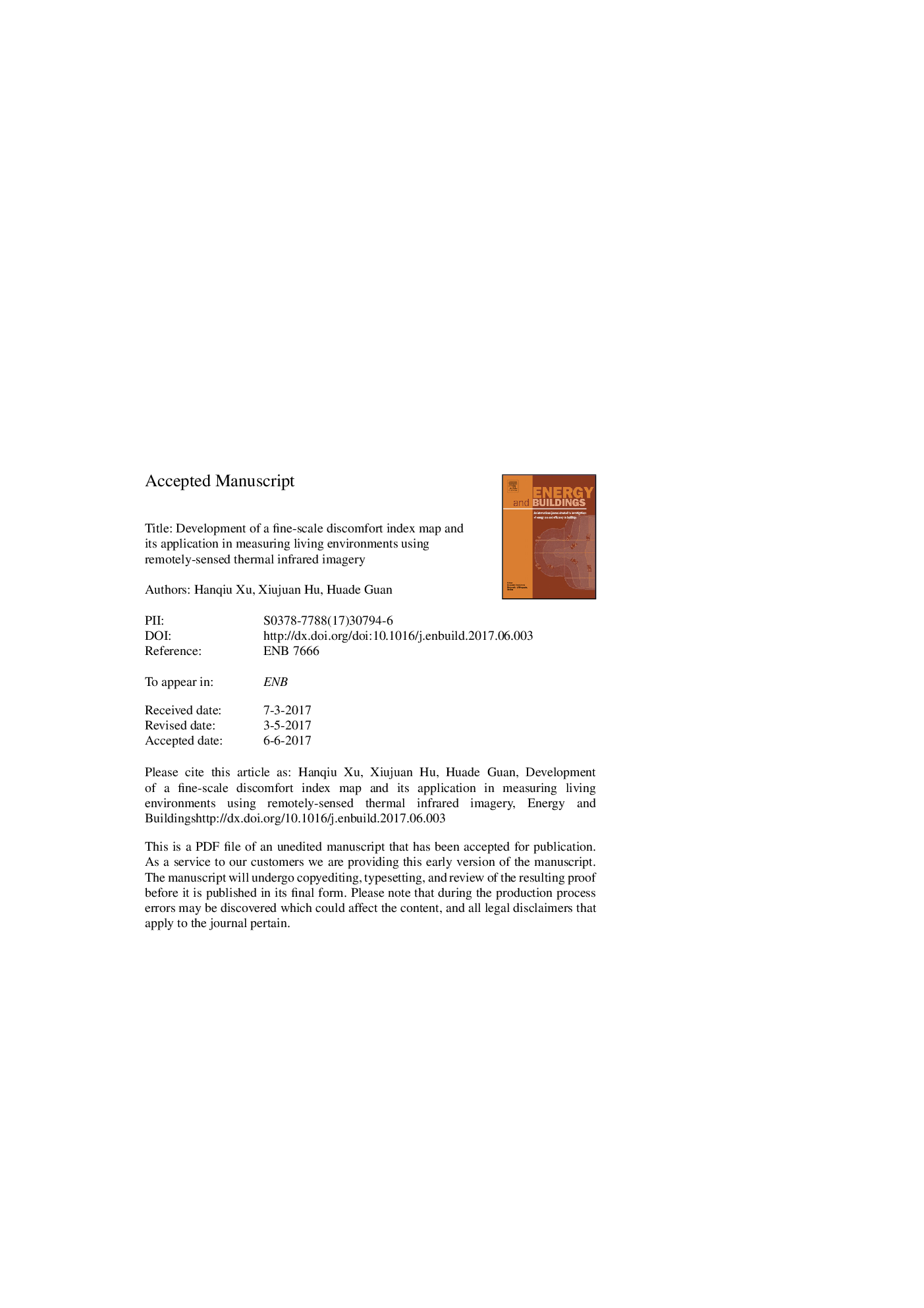ترجمه فارسی عنوان مقاله
توسعه یک نقشه شاخص ناراحتی در مقیاس بزرگ و کاربرد آن در اندازه گیری محیط های زندگی با استفاده از تصاویر مادون قرمز حسگر از راه دور
عنوان انگلیسی
Development of a fine-scale discomfort index map and its application in measuring living environments using remotely-sensed thermal infrared imagery
| کد مقاله | سال انتشار | تعداد صفحات مقاله انگلیسی |
|---|---|---|
| 125756 | 2017 | 29 صفحه PDF |
منبع

Publisher : Elsevier - Science Direct (الزویر - ساینس دایرکت)
Journal : Energy and Buildings, Volume 150, 1 September 2017, Pages 598-607
ترجمه کلمات کلیدی
راحتی حرارتی، شاخص نارسایی، محیط زندگی، سنجش از دور، تیز کردن تصویر، فوژو،
کلمات کلیدی انگلیسی
Thermal comfort; Discomfort index; Living environment; Remote sensing; Image sharpening; Fuzhou;

